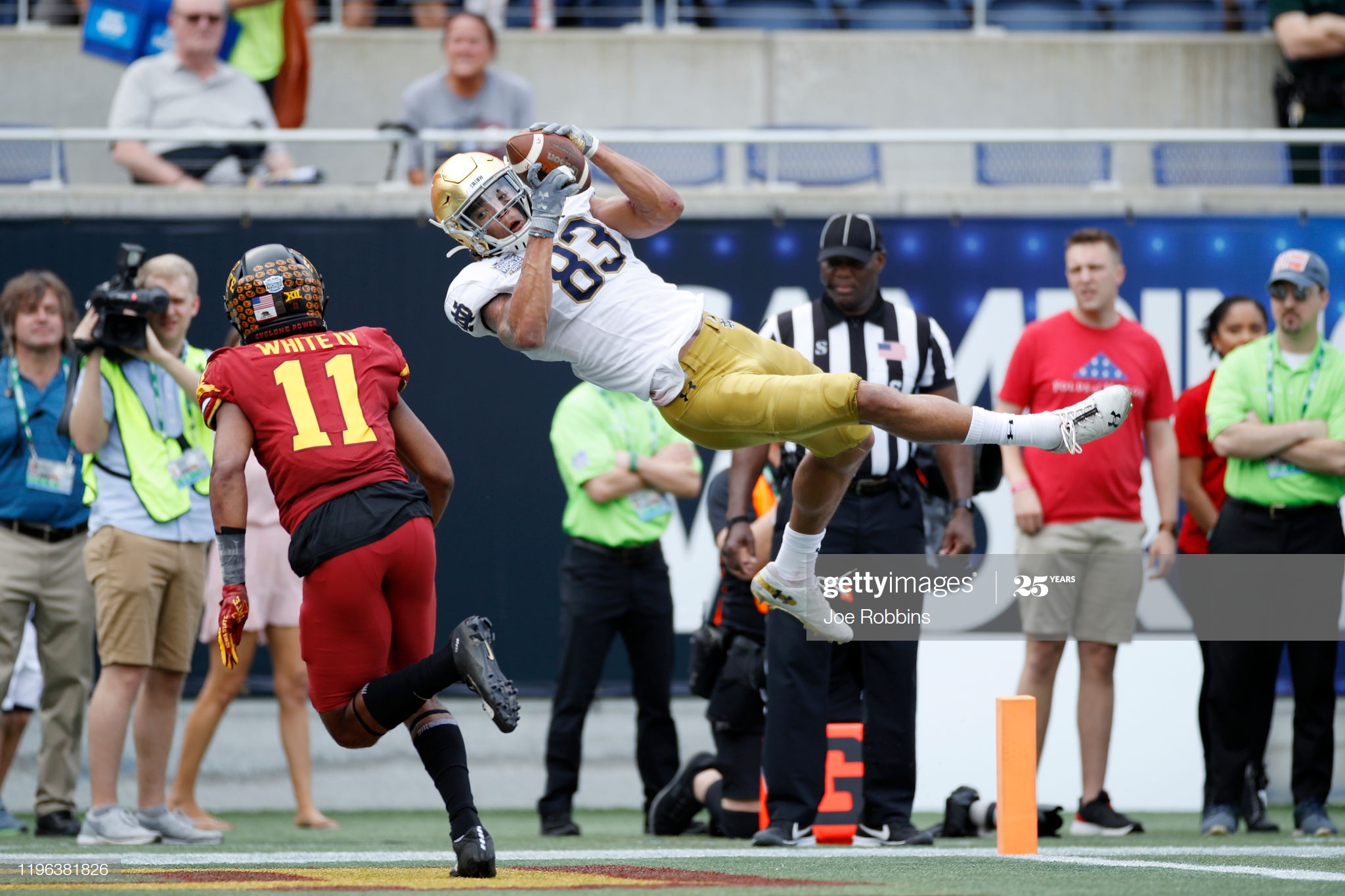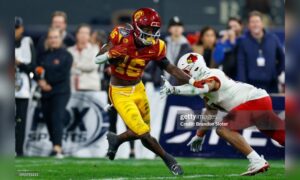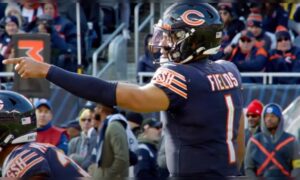How will the Pittsburgh Steelers use rookie wide receiver Chase Claypool in 2020? We’ll have to wait just a little while longer to find out. In the meantime, however, ESPN.com recently wrote about Claypool, along with the other top wide receivers in this year’s draft class, as part of identifying the best, most productive routes each had over the past two seasons in college and how those routes best fit into the teams that selected each. The findings the site had on Claypool weren’t overly surprising.
According to Seth Walder of ESPN Analytics, Claypool’s best route the last two years of college play at Notre Dame was the drag, even though he predominantly ran go routes during that span. Below is the overall synopsis of Claypool from Walder.
Best route: Drag
Because Claypool’s physical attributes are enticing, one would guess that something like a go route would top his list. While he did record the most receiving yards on go routes, he also ran far more of them than any other route type. Relative to other receivers in college football, his yards per go route run were hardly impressive. If you’re drafting a tall and fast receiver with a strong vertical, I’d presume you’re hoping to send him downfield to catch bombs, so his lack of production in that area in college seems like a poor omen.
Numbers-wise, drags are what popped the most — which, again, is not an ideal sign. But on the other hand, drag routes made up 11% of Steelers targets last year, most of any team (though their quarterback situation likely played a big part in that).
I did a full game-by-game contextualization of Claypool’s targets from the 2019 season since the draft took place. My findings really match up closely with those posted recently by Walder.
As I have stated numerous times since he was drafted by the Steelers, the biggest question mark I have about Claypool as he enters his rookie season is his ability to win consistently enough on go routes at the NFL level against higher quality cornerbacks. Claypool checked all of the other boxes as a wide receiver at Notre Dame and he was super fantastic when it came to contested catches down the field or along the sideline. Even so, Claypool didn’t win deep and in stride as much as you would like to see in his college career. This might be one of the main reasons he wasn’t drafted earlier than what he was and while several draftniks had more of a third-round grade on him.
Last season, I had Claypool down as catching 9 of 23 total targets 20 or more yards down the field and 7 of 19 targets 30 or more yards down the field.
In defense of Claypool, the quarterback play at Notre Dame the last two seasons wasn’t great and especially when it came to deep arm strength and accuracy. Claypool answered quite a few questions about his overall speed at the annual scouting combine in Indianapolis by rerunning his 40-yard-dash in 4.42-seconds after measuring in at 6042, 238-pounds.
The truncated offseason that included all of it being virtual, will likely hamper Claypool greatly during his rookie season and especially early. Even so, he’s sure to get some playing time and especially likely inside the red zone. Outside of the red zone, we should get more than just a few looks at Claypool running deep go routes as the regular season progresses and if that’s ultimately the case, it will be interesting to see how he fares with such routes and especially as a target.








